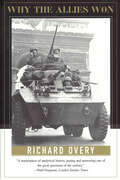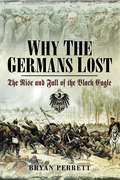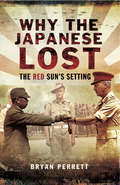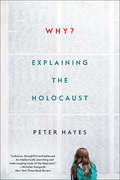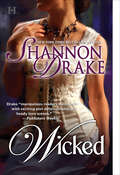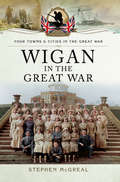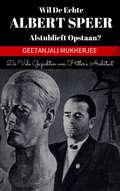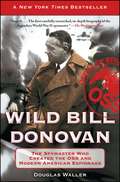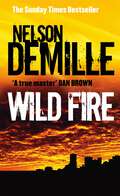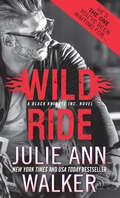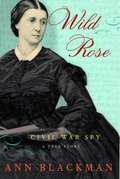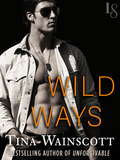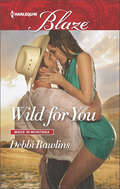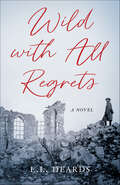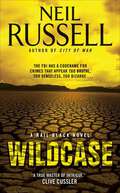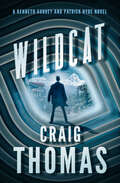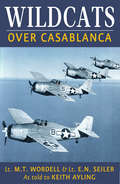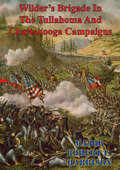- Table View
- List View
Why the Allies Won
by Richard Overy"Overy has written a masterpiece of analytical history, posing and answering one of the great questions of the century."—Sunday Times (London) Richard Overy's bold book begins by throwing out the stock answers to this great question: Germany doomed itself to defeat by fighting a two-front war; the Allies won by "sheer weight of material strength." In fact, by 1942 Germany controlled almost the entire resources of continental Europe and was poised to move into the Middle East. The Soviet Union had lost the heart of its industry, and the United States was not yet armed. The Allied victory in 1945 was not inevitable. Overy shows us exactly how the Allies regained military superiority and why they were able to do it. He recounts the decisive campaigns: the war at sea, the crucial battles on the eastern front, the air war, and the vast amphibious assault on Europe. He then explores the deeper factors affecting military success and failure: industrial strength, fighting ability, the quality of leadership, and the moral dimensions of the war.
Why the Germans Lost: The Rise and Fall of the Black Eagle
by Bryan PerrettThis book examines the history of the German Army which, for the best part of two centuries, influenced the course of events in Continental Europe. It was an army that studied the conduct of war at the highest levels, planning for the destruction of its opponents during the early stages of a war. On some occasions, this principle succeeded brilliantly. On others, its details were flawed and the results were disastrous.This new and exciting publication from seasoned historian and author Bryan Perrett charts the ups and downs of the German army from the days of Frederick the Great to the dying days of World War Two. It passes through the Napoleonic period, takes in the growth of war machinery under the leadership of Clausewitz and Moltke and acquaints the reader with the various victories won against Austria in 1866 and France in 1870. It then moves forwards into the twentieth century, following the course of the Imperial German army, its successes and ultimate failure in the Great War, its recovery in the inter-war years and its final destruction under the leadership of Hitler.rnrnThe book is written for the professional and the general reader alike in the easy, readable style that has ensured Bryan Perrett's international popularity as a military and naval historian.
Why the Japanese Lost: The Red Sun's Setting
by Bryan PerrettThis sweeping historical study examines the military culture and fighting style of Imperial Japan from the mid-nineteenth century to the end of WWII. In Why the Japanese Lost, military historian Bryan Perrett presents an in-depth portrait of a nation that believed itself to be invincible, even when its strength was being systematically destroyed by the greatest industrial power in the world. Perrett analyzes the Japanese Army from the middle of the nineteenth century through the closing months of the Second World War, highlighting its various successes as well as the flaws that led to its greatest failures. Prior to the mid-nineteenth century, Japan was content to remain in medieval isolation. But by the twentieth century, the nation was armed and determined to carve out a new identity characterized by a dominating spirit. Dejected by the Great Depression of the early 1930s, the nation had grown from moderate to militant. Following the attack on Pearl Harbor in 1941, the Japanese Army was emboldened. Hong Kong, Malaya, Singapore, Burma, the Philippines, and the Dutch East Indies were all overrun with deceptive ease, leading the Army to become dangerously overconfident. Through each episode of note in the history of the Japanese military, Perrett analyses and endeavors to explain the root causes and pivotal decisions that led to defeat.
Why?: Explaining the Holocaust
by Peter HayesFeatured in the PBS documentary, "The US and the Holocaust" by Ken Burns, Lynn Novick and Sarah Botstein "Superbly written and researched, synthesizing the classics while digging deep into a vast repository of primary sources." —Josef Joffe, Wall Street Journal Why? explores one of the most tragic events in human history by addressing eight of the most commonly asked questions about the Holocaust: Why the Jews? Why the Germans? Why murder? Why this swift and sweeping? Why didn’t more Jews fight back more often? Why did survival rates diverge? Why such limited help from outside? What legacies, what lessons? An internationally acclaimed scholar, Peter Hayes brings a wealth of research and experience to bear on conventional views of the Holocaust, dispelling many misconceptions and challenging some of the most prominent recent interpretations.
Wicked
by Shannon DrakeA mysterious earl teams up with a brilliant Egyptologist to find a treacherous killer in this Victorian romantic mystery by a New York Times bestseller.Camille Montgomery is aware of the wicked man’s reputation. But as an expert in antiquities, she also knows his family’s Egyptian artifacts are the finest in England. The problem is, her wayward stepfather knows this, too—and he’s determined to steal them. So, when he’s caught in the act of robbing the so-called Beast of Carlyle, Camille must swallow her fear and boldly confront the man whose mask is said to hide a face too loathsome to behold.The Earl of Carlyle has lived in the shadows ever since the suspicious death of his parents. But he’s never stopped trying to unravel the mystery behind what he suspects to have been their murder. And now that the lovely Camille has stumbled into his life, he has the perfect pawn for his deadly game of vengeance and deceit. But in laying his ruthless trap, will he risk losing his own heart?
Wigan in the Great War (Your Towns & Cities in the Great War)
by Stephen McGrealOn 4 August 1914, Britain declared war on Germany. Originally perceived as a short campaign to curtail Germanic imperialism, it developed into a catastrophic four-year-long war of attrition. The First World War is justifiably associated with the horrors of trench warfare and the death of a generation, but history has overlooked the Home Fronts colossal contribution to victory.Shortly after the declaration of war, Lord Kitchener appealed for recruits for a new citizens army. Within four months 4,360 men from Wigan alone responded to the call, and by September 1914, the districts 5th Manchester Territorial Battalion were in Egypt. Everyday life altered immeasurably after the men left for war, those too old for military service worked in munitions factories, joined a Dads Army or dug for victory. The conflagration changed the political and social make up of Britain, allowing most women to escape a life of drudgery by filling occupations vacated by army recruits. The furtherance of the war effort involved every civilian from school age upwards in fundraising for hospital equipment and groceries, ambulances and the provision of a diverse range of home comforts for those at the Front. Compiled predominately from contemporary newspaper and first-hand accounts, this is the first book to deal specifically with the contribution to victory made by the townspeople of Wigan and the nearby district.
Wil de echte Albert Speer alstublieft opstaan?: De vele gezichten van Hitler's architect
by Geetanjali MukherjeeHij liet de wereld vele gezichten zien, maar welke was echt? Albert Speer heeft in de loop der jaren verschillende titels gekregen - ‘de goede nazi’, ‘Hitlers architect’, ‘toekomstige Rijkskanselier’ en zelfs ‘de enige boetvaardige gedaagde in Neurenberg’. Het lijdt geen twijfel dat Albert Speer vele gezichten heeft: hij was een man die tijdens de oorlog een veel grotere macht had dan enig ander behalve Hitler, en algemeen werd aangenomen dat hij Hitler opvolgde; zijn enorme organisatievermogen bracht de Duitse productie tot een hoogtepunt in een tijd waarin de middelen op een dieptepunt stonden; en iedereen, inclusief hijzelf, verwachtte dat hij net als de andere nazi-leiders de doodstraf zou krijgen, en in plaats daarvan met slechts twintig jaar aan de strop zou ontsnappen. In het licht van zijn uitgebreide betrokkenheid bij de nazi-partij, zowel als Hitler's architect als als minister van bewapening, en zijn bijdragen aan de illegale oorlog die door het regime wordt gevoerd, rijst natuurlijk de vraag: heeft Speer voldoende straf gekregen? Weerspiegelde het vonnis de perceptie dat Speer op de een of andere manier ‘minder schuldig’ was dan de andere beklaagden, of bedacht hij zijn verdediging op een manier die zijn straf verminderde? De gebeurtenissen voorafgaand aan het proces van Neurenberg, en het proces zelf, bieden aanwijzingen om deze vragen te beantwoorden: wat kunnen we uit het beschikbare bewijs leren over de persoonlijkheid van Speer, en waarom doet het ertoe?
Wild Bill Donovan: The Spymaster Who Created the OSS and Modern American Espionage
by Douglas Waller&“Entertaining history…Donovan was a combination of bold innovator and imprudent rule bender, which made him not only a remarkable wartime leader but also an extraordinary figure in American history&” (The New York Times Book Review).He was one of America&’s most exciting and secretive generals—the man Franklin Roosevelt made his top spy in World War II. A mythic figure whose legacy is still intensely debated, &“Wild Bill&” Donovan was director of the Office of Strategic Services (the country&’s first national intelligence agency) and the father of today&’s CIA. Donovan introduced the nation to the dark arts of covert warfare on a scale it had never seen before. Now, veteran journalist Douglas Waller has mined government and private archives throughout the United States and England, drawn on thousands of pages of recently declassified documents, and interviewed scores of Donovan&’s relatives, friends, and associates to produce a riveting biography of one of the most powerful men in modern espionage. Wild Bill Donovan reads like an action-packed spy thriller, with stories of daring young men and women in the OSS sneaking behind enemy lines for sabotage, breaking into Washington embassies to steal secrets, plotting to topple Adolf Hitler, and suffering brutal torture or death when they were captured by the Gestapo. It is also a tale of political intrigue, of infighting at the highest levels of government, of powerful men pitted against one another. Separating fact from fiction, Waller investigates the successes and the occasional spectacular failures of Donovan&’s intelligence career. It makes for a gripping and revealing portrait of this most controversial spymaster.
Wild Card Undercover: (love On The Line) (Love on the Line #1)
by Kari LemorAll that glitters in Miami is not gold . . . Lured in by a bad ex-boyfriend and the moonlight of Miami, Meg O’Hara is trapped in a nightmare situation, waiting tables for a crime boss and fearing for her life. When undercover FBI agent Christopher Shaunessy offers her a way out, she seizes it. Getting the goods on Salazar Moreno might not be easy, but she’ll do anything to be freed from her servitude and Moreno’s sexual advances, even if it means moving in with the charismatic agent. Chris Shaunessy pretends to be Meg’s lover in order to keep her safe, but he steels his heart against further involvement. Passion has no place in the sordid world of organized crime. And yet, the closer they get to cracking the case, the stronger his feelings for the spirited waitress shine. It’s a dangerous game he’s playing, and taking Meg in his arms for real could prove a fatal misstep . . .“Wild Card Undercover will capture your heart. Kudos to Lemor.” —RT Book Reviews, 4 Stars
Wild Card: Power Plays 08 (Power Plays #08)
by Tom Clancy Martin H. Greenberg Jerome PreislerTOM CLANCY'S POWERPLAYS <P> When an anonymous e-mail alerts UpLink Technology's operatives to suspicious activity on an exclusive island resort, Pete Nimec goes undercover to investigate. Located off the coast of Trinidad, Rayos del Sol is not just a playground for the world's richest and most powerful people - it's also the headquarters for a joint fiber optic and oil refinery project run by UpLink and Sedco Oil. What Nimec discovers is a plot to drain oil from the United State's strategic petroleum reserve and sell it to outlaw nations. And when the island's highly trained security force is sent to take Nimec out - heaven on earth erupts into hell.
Wild Fire: Number 4 in series (John Corey #4)
by Nelson DeMilleWelcome to the Custer Hill Club - an informal men's club set in a luxurious Adirondack hunting lodge whose members include some of America's most powerful business leaders, military men, and government officials. Ostensibly, the club is a place to gather with old friends, hunt, eat, drink, and talk off-the-record about war, life, death, sex and politics. But one Fall weekend, the Executive Board of the Custer Hill Club gathers to talk about the tragedy of 9/11 and what America must do to retaliate. Their plan is finalized and set into motion.That same weekend, a member of the Federal Anti-Terrorist Task Force is reported missing. His body is soon discovered in the woods near the Custer Hill Club's game reserve. The death appears to be a hunting accident, and that's how the local police first report it, but Detective John Corey has his doubts. As he digs deeper, he begins to unravel a plot involving the Custer Hill Club, a top-secret plan known only by its code name: Wild Fire. Racing against the clock, Detective Corey and his wife, FBI agent Kate Mayfield, find they are the only people in a position to stop the button from being pushed and chaos from being unleashed.
Wild Hearts (Novella)
by Tina WainscottIn this sizzling introductory eBook novella, Tina Wainscott kicks off a new series featuring a team of tough, fearless heroes who are prepared for just about anything, except the last threat they could ever expect: true love. On a good day as a Navy SEAL, you save a life, protect a freedom, stop a killer. And on a bad day . . . well, you don't get to have a bad day. But then one SEAL team does. Five impeccably trained soldiers who are used to danger and unafraid of death are sent into a black ops assignment where no one knows the full story of deceit and deception. The situation gets ugly. The press gets wind. Someone has to take the fall. And when these five SEALs fall, they fall hard. Meet the Justiss Alliance: Risk, Rath, Saxby, Knox, and Julian. Led by a mysterious employer with plenty to hide, these fallen stars of the D.O.D. are about to take advantage of their ruined reputations and start turning wrongs to rights--no matter the cost.
Wild Nights
by Tina WainscottThe courageous men of USA Today bestselling author Tina Wainscott's Justiss Alliance series never give up and never make a promise they can't live up to--especially when love is on the line. Saxby Cole's latest mission--at Decadence, a hedonistic tropical resort--sounds like a plum assignment for a confirmed bachelor, but he isn't here to mingle. There's a dangerous prostitution ring drugging innocent women--and Sax has come to take them down. After dumping her cheating fiancé right before their Caribbean vacation, Jennessy Shaw goes alone, hoping to explore her wild side. But by the end of the first night, she's not sure she has one. Which is why it's so shocking when she wakes up in a sexy stranger's room with no memory of the night before. Sax wants to send this sweet beauty home, but Jennessy turns out to be a valuable partner in his investigation. Even more surprising is the sudden need he feels to keep her close. Diving together into the dark shadows of this island paradise, Jennessy lets Sax into her heart--and discovers a passion she never knew she had.
Wild Ride (Black Knights Inc. #9)
by Julie Ann WalkerA USA Today Bestseller!“This razor-sharp, sensual, and intriguing tale will get hearts pounding”—Publishers Weekly, STARRED ReviewThe hero we've all been waiting for… Ethan "Ozzie" SykesFormer Navy SEALUnderground operator for Black Knights Inc., the covert government defense firm disguised as a custom motorcycle shopIn a black-on-black international mission that went seriously sideways, Ozzie was badly injured—now he's stuck at BKI headquarters in Chicago, champing at the bit to get out into the field again. To his disgust, he's tasked with distracting Chicago Tribune ace reporter Samantha Tate, who's been trying to dig up the dirt on BKI for years. Turns out Samantha's beauty, intelligence and sense of humor are a seriously big distraction, and Ozzie's losing his desire to keep her at bay.Ozzie's tired of hiding, and Samantha may be the best—and worst—person to share his secrets with..."A nail-biter from start to finish". —Publishers Weekly for Too Hard to Handle
Wild Rose: Rose O'Neale Greenhow, Civil War Spy
by Ann BlackmanFor sheer bravado and style, no woman in the North or South rivaled the Civil War heroine Rose O'Neale Greenhow. Fearless spy for the Confederacy, glittering Washington hostess, legendary beauty and lover, Rose Greenhow risked everything for the cause she valued more than life itself. In this superb portrait, biographer Ann Blackman tells the surprising true story of a unique woman in history. "I am a Southern woman, born with revolutionary blood in my veins," Rose once declared-and that fiery spirit would plunge her into the center of power and the thick of adventure. Born into a slave-holding family, Rose moved to Washington, D. C. , as a young woman and soon established herself as one of the capital's most charming and influential socialites, an intimate of John C. Calhoun, James Buchanan, and Dolley Madison. She married well, bore eight children and buried five, and, at the height of the Gold Rush, accompanied her husband Robert Greenhow to San Francisco. Widowed after Robert died in a tragic accident, Rose became notorious in Washington for her daring-and numerous-love affairs. But with the outbreak of the Civil War, everything changed. Overnight, Rose Greenhow, fashionable hostess, become Rose Greenhow, intrepid spy. As Blackman reveals, deadly accurate intelligence that Rose supplied to General Pierre G. T. Beauregard written in a fascinating code (the code duplicated in the background on the jacket of this book). Her message to Beauregard turned the tide in the first Battle of Bull Run, and was a brilliant piece of spycraft that eventually led to her arrest by Allan Pinkerton and imprisonment with her young daughter. Indomitable, Rose regained her freedom and, as the war reached a crisis, journeyed to Europe to plead the Confederate cause at the royal courts of England and France. Drawing on newly discovered diaries and a rich trove of contemporary accounts, Blackman has fashioned a thrilling, intimate narrative that reads like a novel. Wild Rose is an unforgettable rendering of an astonishing woman, a book that will stand with the finest Civil War biographies.
Wild Ways
by Tina WainscottThe Justiss Alliance returns in USA Today bestselling author Tina Wainscott's novel of outlaws and daredevils, as the search for a missing woman forces two brave souls to tap into their wild side. When her sister, Diana, rides off into the sunset with a member of the Kings of Chaos motorcycle gang, Mollie Reagan is beyond worried. Two weeks later, a desperate call from Di is abruptly cut off, launching Mollie on a dangerous search. Before Julian Cuevas receives his first assignment for the Justiss Alliance, he finds one of his own: a beautiful, courageous woman looking for her sister in the dark world of violent criminals. Soon Mollie's mission is Julian's mission--one he'd give his life for. Mollie is used to going it alone. Trusting one stranger is hard enough, but Julian brings a whole team from the private "security" firm he works for. The sexy SEAL is living proof that some people can be counted on, even if her savior is a well-armed world-class sniper riding in on his Harley. From head to toe, Julian is a lethal weapon--and now he's taking aim at fulfilling Mollie's every desire.
Wild Weasel Fighter Attack: The Story of the Suppression of Enemy Air Defences
by Thomas WithingtonDetecting and destroying enemy Surface-to-Air Missiles (S.A.M.) and radar is arguably the most dangerous mission that any pilot can undertake. Tactics differ with air forces, but the general principal is to fly a formation of aircraft into an area where the enemys air defenses are strong, wait for their radar to illuminate the aircraft and then launch a volley of anti-radiation missiles to destroy the radar and thus blind the S.A.M. and air defenses. Put simply, without the Suppression of Enemy Air Defences (S.E.A.D.) mission, the loss of other aircraft will be too high and the effectiveness of attack on the enemy too low.Despite the undeniable bravery of the aircrews who flew these missions for the United States Air Force in every conflict since the Vietnam war, and their colleagues in other air forces across the world who have risked their lives in similar missions, the tactics, history, aircraft and weapons of the S.E.A.D. mission have seldom benefited from rigorous historical examination. Using interviews with S.E.A.D. pilots, industrial experts and historical documents this book for the first time will give a detailed history of the S.E.A.D. mission from the Vietnam War to the present day.
Wild for You (Made in Montana)
by Debbi RawlinsShe's driving him wild! Aspiring director Erin Murphy has sunk everything (including her food budget) into an independent Western movie. And she has the perfect location for the final scene-if she can get stubborn rancher Spencer Hunt to agree. With her future in the balance, Erin can't afford to screw this up. Even if it means she has to play dirty... The moment he sees Erin's long legs and red heels, Spencer knows he's in deep, deep trouble. Suddenly, his hard-won solitude is shattered by this fiercely determined woman, and damned if he can resist. But he'll never let the film crew invade his land. Until longing turns into lust...and he realizes Erin may be more than just a sexy diversion.
Wild on You
by Tina WainscottThe Justiss Alliance is an elite team of heroes out to do right. In Wild on You, one untamable SEAL meets a woman who handles the wildest sort of animals--until she herself becomes the hunted. When Rick Yarbrough, aka Risk, a discharged SEAL with a taste for danger, joins the Justiss Alliance, his first assignment seems like a baby-sitting gig: He must guard an out-of-control general's daughter. Then he meets his charge. Addie Wunder is no baby. She's a dedicated animal-rights activist who isn't above breaking the law if innocent creatures are threatened. But her work has made her a lot of powerful enemies. If she doesn't stop, she may just turn herself into an endangered species. Risk's mission is to keep Addie out of trouble. But as they grow closer, Addie becomes so much more than a job. And the more he has to lose, the more Risk is willing to put his own life on the line--for her cause, her safety, and her sweet-hot embrace.
Wild with All Regrets: A Novel
by E.L. DeardsA decade has passed since Lucas Connolly lost his best friend—and the only man he’s ever loved—in World War I, but he still can’t shake his guilt over Jamie’s death. In fact, ever since losing Jamie, Lucas has heard his friend’s voice inside his head—confused about what happened to him, begging him for help. And now, suddenly, it’s not just Jamie’s voice anymore; now, a specter who looks and acts exactly like Jamie did before his death, and who is demanding answers from Lucas about what happened to him, has begun to haunt him.Concerned about Lucas’s deteriorating mental state, his friend Angela encourages him to move on with his life, and even sets him up with a coworker whom she suspects is also gay. But Lucas is too consumed with the secret he still keeps about the part he played in Jamie’s death to even begin to form a healthy connection with someone new—and as Jamie’s ghost begins to recover his memories and get closer to the truth, Lucas’s obsession only deepens. Ultimately, Lucas realizes that his only path forward is to first go backward—that only in examining his troubled youth, facing his deepest self, and shining a light on the shadowed parts of his past will he finally be able to set his old friend, and himself, free.
Wildcase: A Rail Black Novel (The Rail Black Novels)
by Neil RussellIn a desert town on the road between L.A. and Vegas, all hell has broken loose . . . In a bedroom community populated by good cops and bad cops, a retired police officer and his wife have been brutally tortured and slain. A "wildcase" with no apparent rhyme or reason, it has caught the attention of the FBI . . . and Hollywood billionaire, ex-Delta Force operative Rail Black, who called the slaughtered pair his friends.With his frighteningly efficient skills and more money than he could ever spend, Rail believes in helping people he cares about—even if it means clashing with the government's enforcers. But this wildcase has toxic tendrils rooted in a distant past, snaking through a shady megachurch, through Sin City, and into shadowy places halfway around the globe. And the precious blood already spilled is nothing compared to the deluge to come—with Rail's own added to the mix if he gets too close.
Wildcat (The Kenneth Aubrey & Patrick Hyde Series)
by Craig ThomasAn East German officer&’s defection goes fatally awry in this &“adroit, densely plotted spy novel&” by the New York Times–bestselling author (Publishers Weekly). MI6&’s Kenneth Aubrey is on the verge of retirement, but not before he&’s tasked with extracting Kurt Winterbach, an East German intelligence officer who wants to defect—and has valuable military secrets to share. Unfortunately, things go sideways when Brigitte Winterbach, Kurt&’s mother and a high-ranking official in the KGB, prevents his wife and kids from following him. Then, while attempting to flee, Kurt is fatally injured. Aubrey has history with Brigitte, and she already blames him for the long-ago death of her father. Now she&’s lost her son too—and wants revenge. But while she&’s laser-focused on Aubrey, bigger wheels are turning too—and Aubrey&’s adopted son, ex-Ghurka Tim Gardiner, has stumbled upon a plot in Nepal that&’s made him the target of a KGB manhunt . . . &“Another sturdy, reliable thriller for Thomas&’ devoted fans. The aged Aubrey is surprisingly believable as an energetic and successful spy—and there&’s some pleasantly ominous South Asian scenery as well.&” —Kirkus Reviews &“Explosive.&” —Chicago Sun-Times &“When it comes to keeping the story moving and stoking up the excitement, Mr. Thomas knows his business.&” —The New York Times
Wildcats over Casablanca: U. S. Navy Fighters In Operation Torch (Aviation Classics Ser.)
by Keith Ayling M. T. Wordell E. N. SeilerWildcats Over Casablanca, first published in 1943, is a first-hand account by U.S. naval aviators in World War Two's 'Operation Torch' – the November 1942 British-American invasion of French North Africa and their fighting against the Vichy French. The exploits of the airmen, based on the aircraft carrier USS Ranger, and flying their trusted Grumman F4F “Wildcats” are described, as are sorties of the carrier’s bomber and scout squadrons. French battleship Jean Bart, still under construction following the French surrender to Germany, was in the Casablanca Harbor, and sunk as part of the Operation. The Operation was also significant as it was one of the first wartime engagements to use carriers in support of an amphibious landing. During the combat, co-author “Mac” Wordell, who commanded the squadron – known as the “Red Rippers” – was shot down and taken prisoner by the Vichy French, and an interesting perspective is provided of the divided French loyalties prevalent at that time.
Wilder's Brigade In The Tullahoma And Chattanooga Campaigns Of The American Civil War
by Major Robert E. HarbisonThe thesis is a historical analysis of Colonel John T. Wilder's infantry brigade in the Tullahoma and Chickamauga campaigns of the American Civil War. In 1863 General Rosecrans, commander of the Army of the Cumberland, authorized Wilder to mount the brigade on horseback and rearm it with Spencer repeating rifles, giving the brigade unsurpassed mobility and firepower. The thesis examines the mounting and rearming of the brigade, then examines the role the brigade played in the Army of the Cumberland through the Chickamauga campaign. The primary research question concerns how effectively the leadership in the Army of the Cumberland employed the brigade in light of its capabilities. Subordinate questions concern Wilder's leadership, the impact of technology on the performance of the brigade, and the brigade's potential for offensive operations. The thesis concludes that the leadership of the Army of the Cumberland, in particular General Rosecrans, did not employ the brigade well. Lack of a clear concept of how to employ the brigade and command and control problems led to ineffectual tasks and minimal contributions. Wilder's personality compounded the problem. During the campaigns, the brigade's Spencer repeating rifles proved to be an improvement over standard-issue rifled muskets. The mobility of the brigade was its most influential asset, but the army was not able to take advantage of it.
